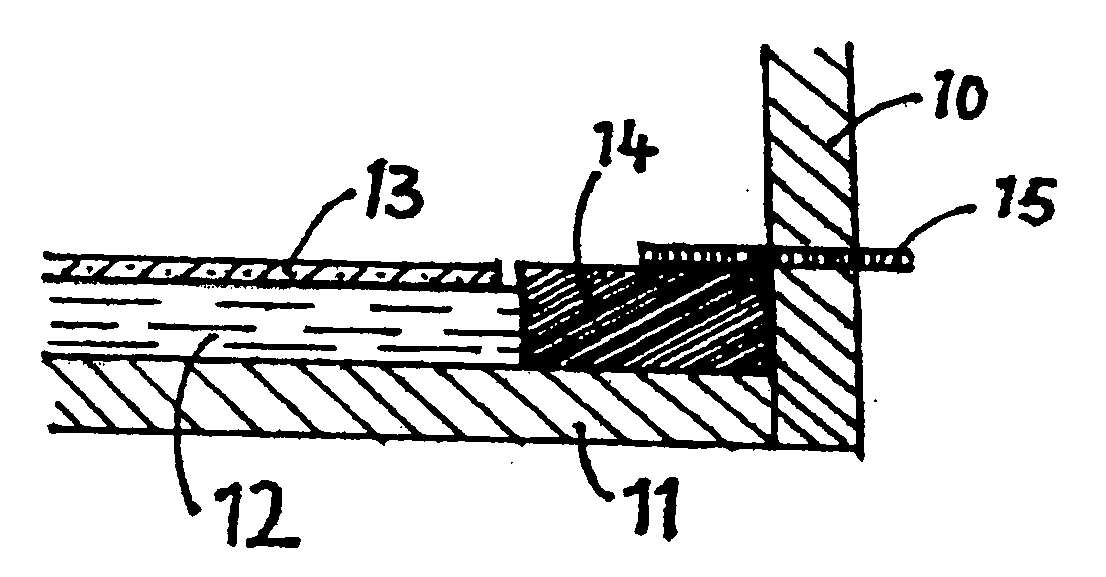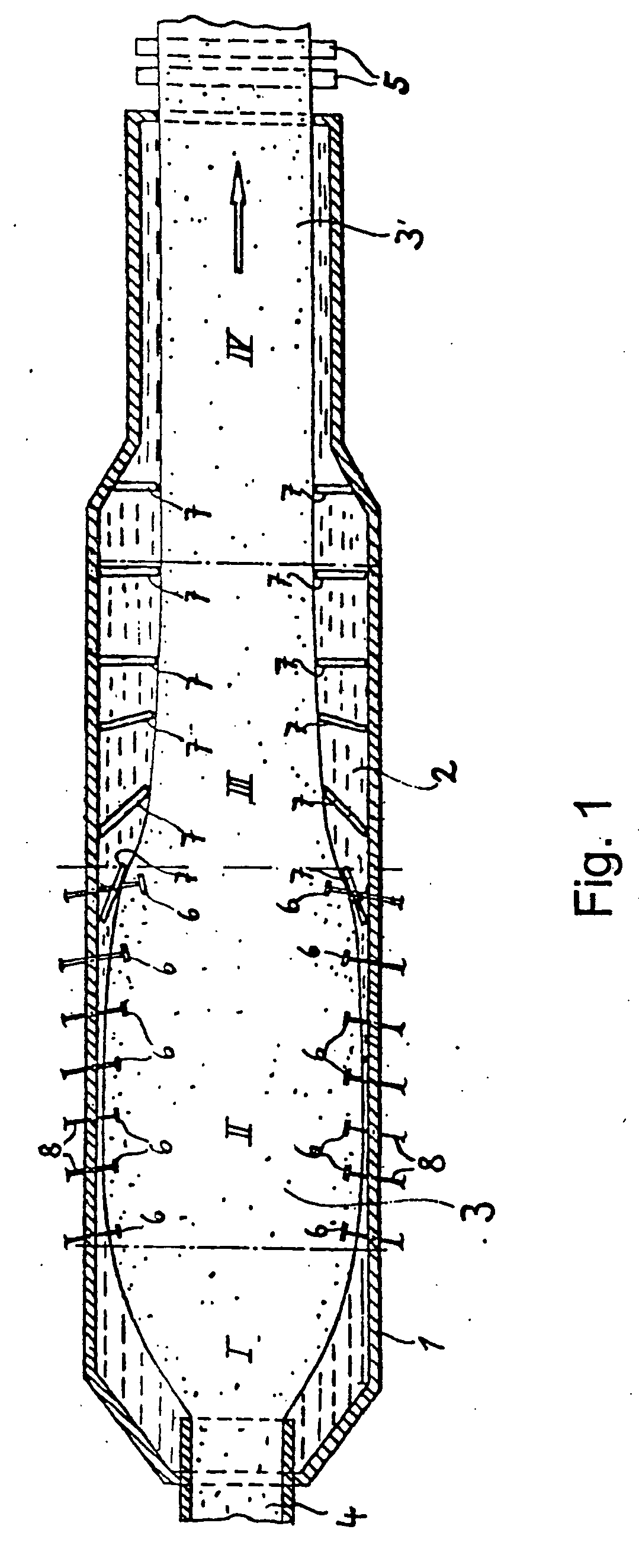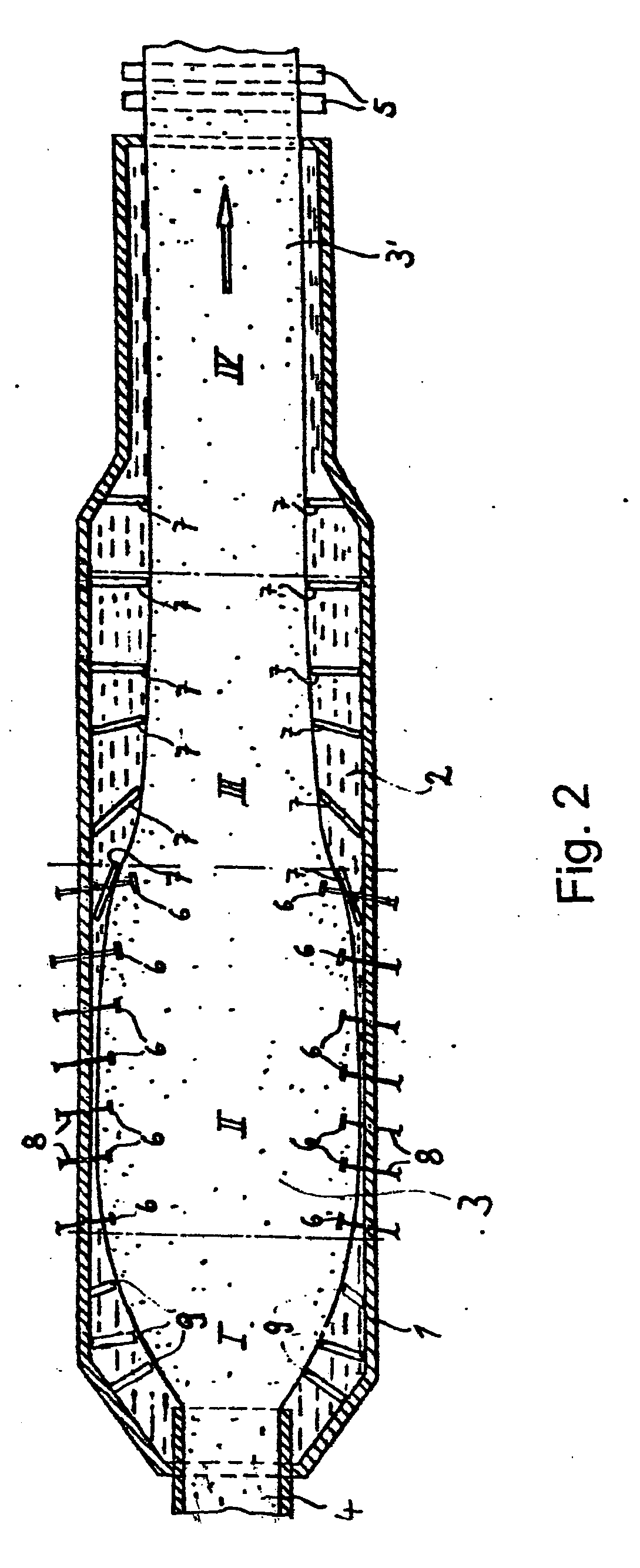Float glass process for making thin flat glass and thin flat glass substrate made with same
a technology of float glass and flat glass, which is applied in the direction of glass rolling apparatus, manufacturing tools, transportation and packaging, etc., can solve the problems of undetectable thickness fluctuations and waviness of glass sheets, and it is not possible to make display glass with thickness,
- Summary
- Abstract
- Description
- Claims
- Application Information
AI Technical Summary
Benefits of technology
Problems solved by technology
Method used
Image
Examples
example
[0039] A thin flat glass sheet with a thickness of about 0.7 mm was drawn in a conventional float plant according to the prior art. The thickness of the glass sheet leaving the float plant of the prior art was measured. This thickness is shown graphically in FIG. 4. The measurement occurred by a double reflection method, in which a laser contour line is projected on the glass sheet and the thickness is calculated from the spacing of the received reflections from the front side and the rear side of the glass sheet respectively. The thickness variation is shown in FIG. 4. Then a flag was inserted in the molten metal on both sides of the forming glass sheet with a spacing of about 3.5 m from the front side of the float bath (bath inlet) in each case. The angle of the flag to the lateral wall amounted to 90°, the spacing to the sidewall 0 cm and the spacing to the glass flow 20 cm. The flag had a height of 70 cm and rests on the float tank bottom. The thickness fluctuation attained acco...
PUM
| Property | Measurement | Unit |
|---|---|---|
| Length | aaaaa | aaaaa |
| Fraction | aaaaa | aaaaa |
| Thickness | aaaaa | aaaaa |
Abstract
Description
Claims
Application Information
 Login to View More
Login to View More - R&D
- Intellectual Property
- Life Sciences
- Materials
- Tech Scout
- Unparalleled Data Quality
- Higher Quality Content
- 60% Fewer Hallucinations
Browse by: Latest US Patents, China's latest patents, Technical Efficacy Thesaurus, Application Domain, Technology Topic, Popular Technical Reports.
© 2025 PatSnap. All rights reserved.Legal|Privacy policy|Modern Slavery Act Transparency Statement|Sitemap|About US| Contact US: help@patsnap.com



